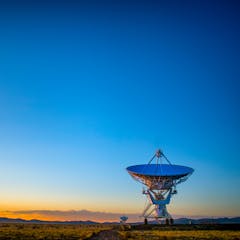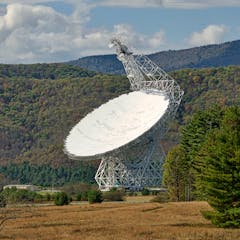
Articles on Aliens
Displaying 1 - 20 of 94 articles

The Netflix series ‘3 Body Problem’ is based on Liu Cixin’s scifi novel that follows what happens to the alien residents of a planet that orbits two stars.

When scientists observed planets revolved around the Sun, they posited we were now like other planets. And if other planets were like Earth, then they most likely also had inhabitants.

We have joined a game which has been going on before our arrival, and the strategy that everyone has learned is to hide.

When most of us left school there were still 9 planets – but we’ve come a long way since Pluto’s demotion. Here’s what’s next on the space agenda.

Several scientific projects are aiming to investigate UFO sightings.

The space agency hopes to get to the bottom of the many sightings being reported.

Alien hunters should learn from the Intergovernmental Panel on Climate Change (IPCC).

Could spherical metallic fragments be from a nuclear test?

You’re not allowed to visit the part of Nevada known as Area 51. That’s because it’s a top-secret government facility. But the secrecy has to do with spy planes, not space aliens.

All who testified before a congressional subcommittee claimed that UFOs pose a threat to national security, though there’s still no public evidence that UFOs are extraterrestrial.

Three Indigenous studies scholars draw from colonial histories and explain why listening for alien life can have ethical ramifications.

While UFO videos might seem compelling, they’re rarely backed up with evidence. A sociologist explains why claims of alien life gain traction through both social and mass media every few years.

A new book explores the enormous Alien franchise spawned by the 1979 film.

For nearly 30 years, Western Australia peddled the lie that Aboriginal people had to apply under state law to become ‘Australian citizens’.

The accumulated radio emission from mobile phones on Earth is beginning to become quite significant.

The Jupiter Icy Moons Explorer and Europa Clipper missions will arrive at Jupiter in the 2030s and provide researchers with unprecedented access to the icy moons orbiting the gas giant.

We’ve spent ages learning about the people who think they’ve come from another planet, so you don’t have to.

With more than 5,000 known exoplanets, astronomers are shifting their focus from discovering additional distant worlds to identifying which are good candidates for further study.

To date, we have not heard from any aliens. Nor have we seen any – but here are the fascinating projects working to change that.

Can artificial intelligence transform the search for alien intelligence?
